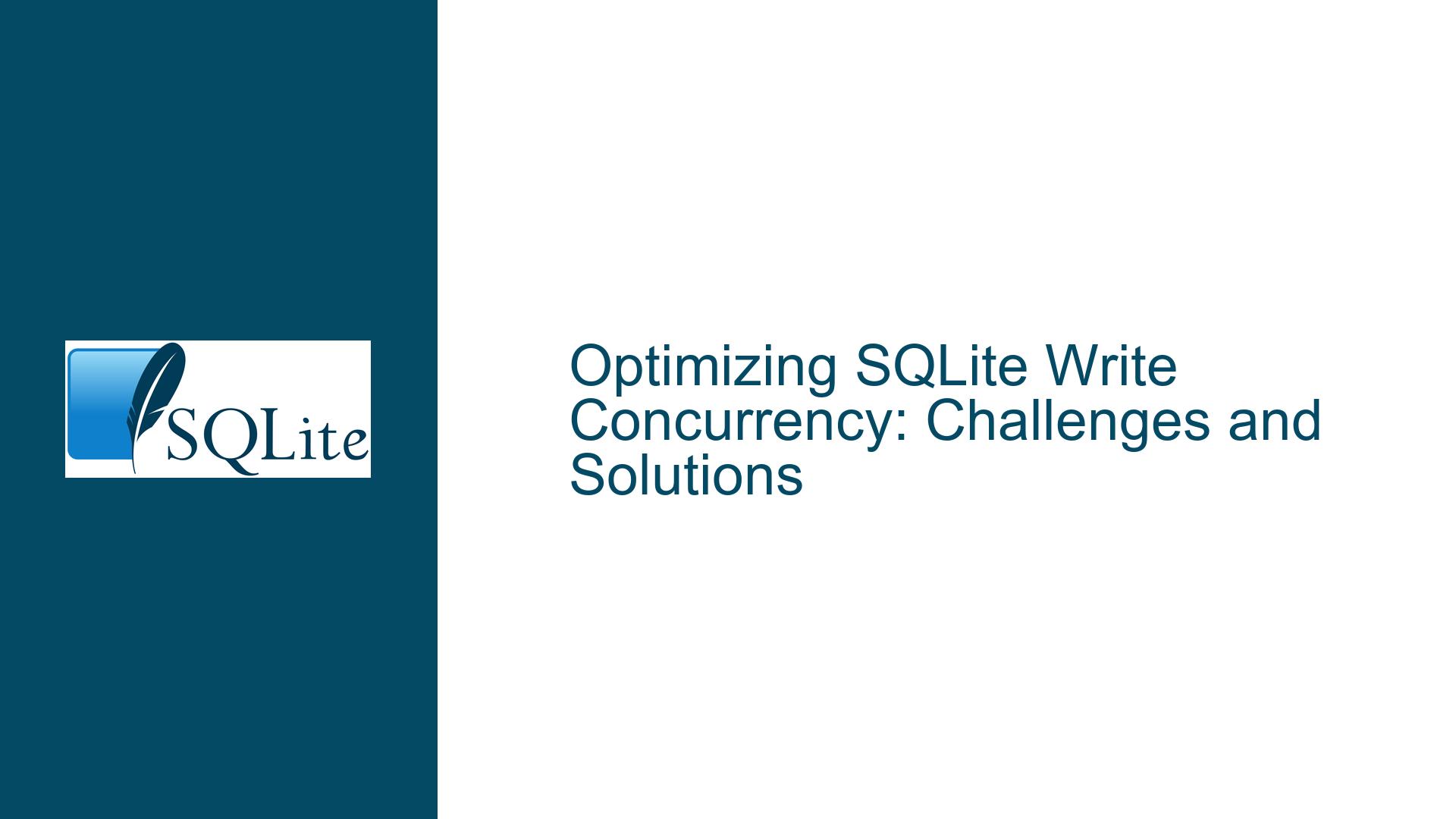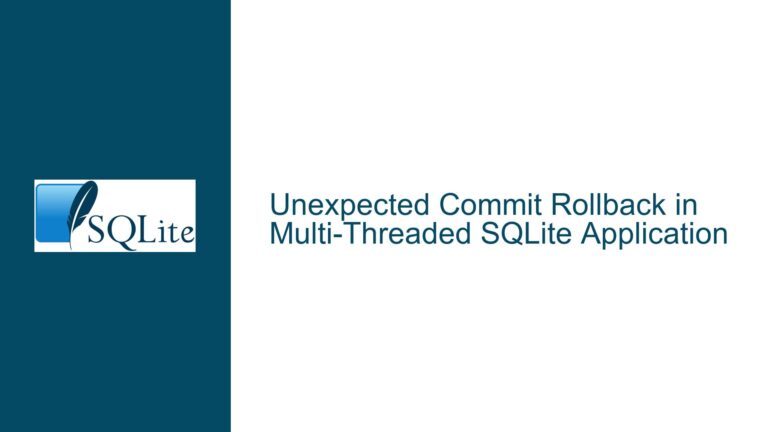Optimizing SQLite Write Concurrency: Challenges and Solutions
Understanding SQLite’s Write Concurrency Limitations
SQLite is renowned for its simplicity, portability, and reliability, making it a popular choice for embedded databases and lightweight applications. However, one of its most notable limitations is its handling of write concurrency. By design, SQLite allows only one writer to operate on the database at any given time, regardless of the journaling mode in use. This restriction stems from SQLite’s file-level locking mechanism, which ensures data integrity but can become a bottleneck in scenarios requiring high write throughput or concurrent write operations.
The core of the issue lies in SQLite’s architecture. When a write operation is initiated, SQLite acquires an exclusive lock on the entire database file. This lock prevents other writers from accessing the database until the current operation completes. While this approach guarantees atomicity and consistency, it inherently limits the database’s ability to handle multiple concurrent write requests efficiently. This limitation becomes particularly pronounced in application server environments, where multiple clients or processes may attempt to write to the database simultaneously.
The challenge of improving write concurrency in SQLite has been the focus of several experimental branches and extensions. One such effort is the "server-process-edition" branch, which aimed to enhance concurrency by implementing page-level locking and using multiple journal files—one for each concurrent write. While this approach showed promise in increasing write throughput, it introduced complexities related to managing readers and writers, particularly under high concurrency. As a result, the development of this branch has stalled, and alternative methods for improving concurrency have gained traction.
Exploring the Trade-offs of Page-Level Locking and Snapshot Isolation
The "server-process-edition" branch attempted to address SQLite’s write concurrency limitations by replacing file-level locking with page-level locking. This approach allows multiple writers to operate on different pages of the database simultaneously, provided they are not accessing the same pages. To support this, the branch introduced multiple journal files, enabling each writer to maintain its own transaction log. This design theoretically increases write throughput by reducing contention between writers.
However, the implementation of page-level locking comes with its own set of challenges. One significant drawback is the increased complexity of managing readers and writers. In the "server-process-edition" branch, readers must acquire latches to ensure they are accessing consistent data. While this works well with a small number of concurrent readers, performance begins to degrade as the number of reader threads increases. This limitation makes the branch less suitable for applications requiring high read concurrency alongside write operations.
In contrast, the "begin-concurrent" branch takes a different approach by leveraging snapshot isolation. Snapshot isolation allows readers to operate on a consistent view of the database without blocking writers, and vice versa. This method scales more effectively with a large number of concurrent readers, as it avoids the need for readers to acquire locks that could conflict with writers. The "begin-concurrent" branch has been integrated into server databases like BedrockDB, demonstrating its viability for high-concurrency environments.
The choice between page-level locking and snapshot isolation ultimately depends on the specific requirements of the application. Page-level locking may offer higher write throughput in scenarios with a limited number of concurrent readers, while snapshot isolation provides better scalability for applications with a high degree of read concurrency. Understanding these trade-offs is crucial for selecting the most appropriate concurrency model for a given use case.
Practical Strategies for Enhancing Write Throughput in SQLite
For developers seeking to optimize write concurrency in SQLite, several strategies can be employed to mitigate the limitations of its single-writer model. One approach is to minimize the duration of write transactions by reducing the amount of work performed within each transaction. This can be achieved by breaking large transactions into smaller, more granular units of work. By doing so, the likelihood of contention between writers is reduced, allowing the database to process write requests more efficiently.
Another strategy is to leverage in-memory databases for temporary or non-persistent data. SQLite supports in-memory databases, which can be used to offload write operations from the primary on-disk database. This approach is particularly useful for applications that generate a high volume of transient data, such as logging or caching systems. By isolating these operations in an in-memory database, the primary database can focus on handling persistent data with reduced contention.
Additionally, developers can explore the use of connection pooling to manage database connections more effectively. Connection pooling reduces the overhead associated with establishing and tearing down database connections, which can improve overall performance in high-concurrency scenarios. By maintaining a pool of reusable connections, the application can handle a larger number of concurrent requests without overwhelming the database.
Finally, it is essential to monitor and tune the database’s performance regularly. SQLite provides several configuration options and pragmas that can be adjusted to optimize performance for specific workloads. For example, enabling Write-Ahead Logging (WAL) mode can improve concurrency by allowing readers and writers to operate simultaneously under certain conditions. Similarly, adjusting the cache size and page size parameters can enhance the database’s ability to handle concurrent operations.
In conclusion, while SQLite’s single-writer model presents challenges for applications requiring high write concurrency, a combination of architectural considerations, practical strategies, and performance tuning can help mitigate these limitations. By understanding the trade-offs between different concurrency models and implementing best practices, developers can unlock the full potential of SQLite in even the most demanding environments.






